Imagine stepping into your garden and being greeted by the gentle flutter of vibrant wings, a symphony of colors in motion. Creating a butterfly habitat is not just about attracting these enchanting creatures; it’s about fostering a thriving ecosystem right in your backyard. Whether you’re just starting out with a few pots on a balcony or you’re an experienced gardener with sprawling beds, you’ll discover that inviting butterflies into your garden is an immensely rewarding endeavor. These beautiful pollinators not only enhance the aesthetic appeal of your outdoor space, but they play a crucial role in maintaining the health and balance of our environment.
By the time you finish reading, you’ll be equipped with the knowledge to transform your garden into a butterfly haven. You’ll learn how to select the right plants that cater to both caterpillars and butterflies, ensuring a continuous lifecycle. We’ll explore the importance of providing food, water, and shelter, all tailored to the needs of these delicate insects. So, whether you’re aiming to bring a flutter of life to your garden or enhance an existing landscape, this guide will give you the tools you need to succeed.
As we delve deeper, you’ll gain insights into the best practices for maintaining a butterfly-friendly garden throughout the seasons. From understanding the specific needs of local butterfly species to creating a habitat that supports them year-round, your gardening efforts will contribute to the conservation of these vital pollinators. This journey promises to be as enriching for your soul as it is for your garden, offering a unique connection to nature that is both nurturing and fulfilling.
Select Appropriate Native Plants
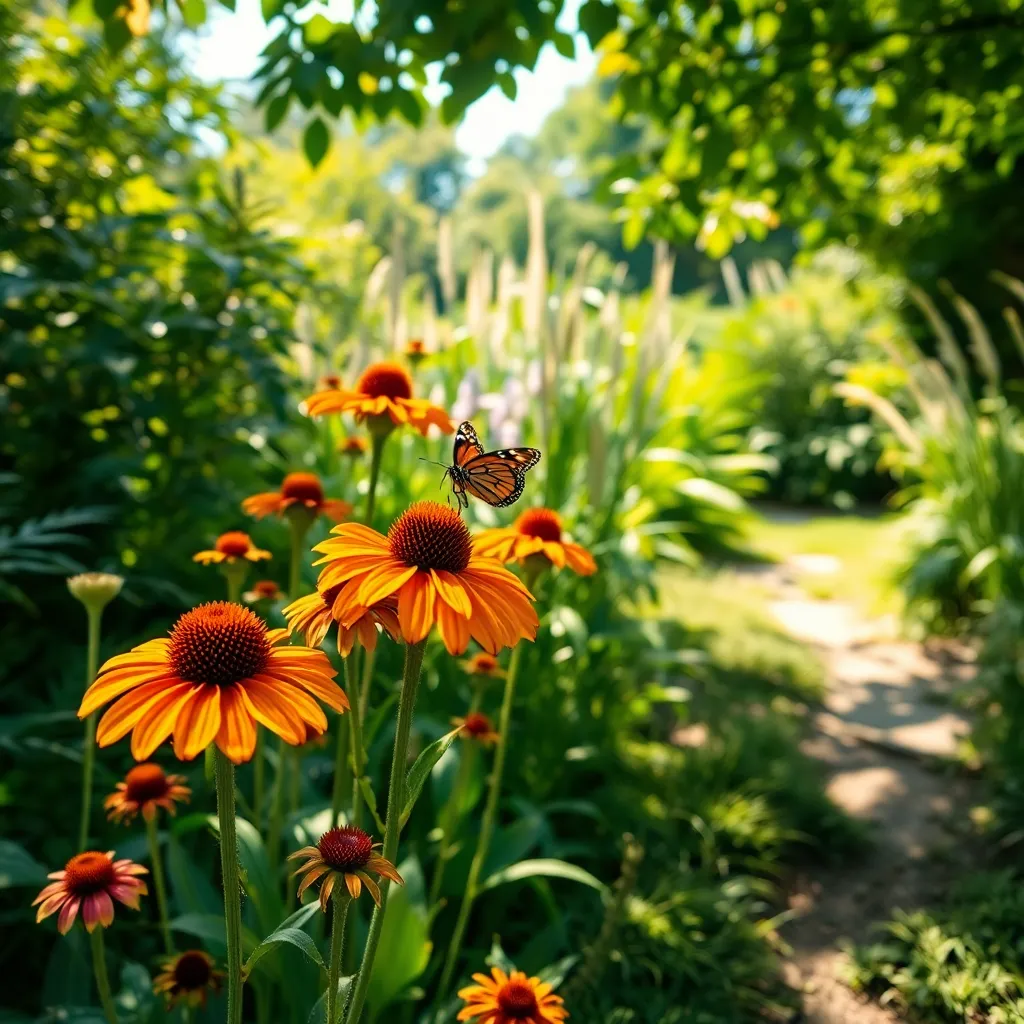
Native plants are essential for creating a thriving butterfly habitat because they provide the right food and shelter. To select appropriate native plants, research what plants are native to your specific region as they will be best suited to the local climate and soil conditions.
Consider plants that have a continuous blooming cycle to provide butterflies with nectar throughout the growing season. Perennials like milkweed, aster, and coneflower are excellent choices, as they are hardy and require minimal maintenance once established.
For beginners, start with a mix of flowering plants that cater to both the adult butterflies and caterpillars. Choose plants with varying heights and structures, such as the tall and sturdy Joe-Pye weed or the sprawling lantana, to create a diverse habitat.
Advanced gardeners can experiment with creating microclimates using native plant groupings. By clustering plants with similar water and light needs, you can optimize growing conditions and reduce the need for extensive irrigation, making your butterfly garden more sustainable.
Design a Nectar-Rich Garden
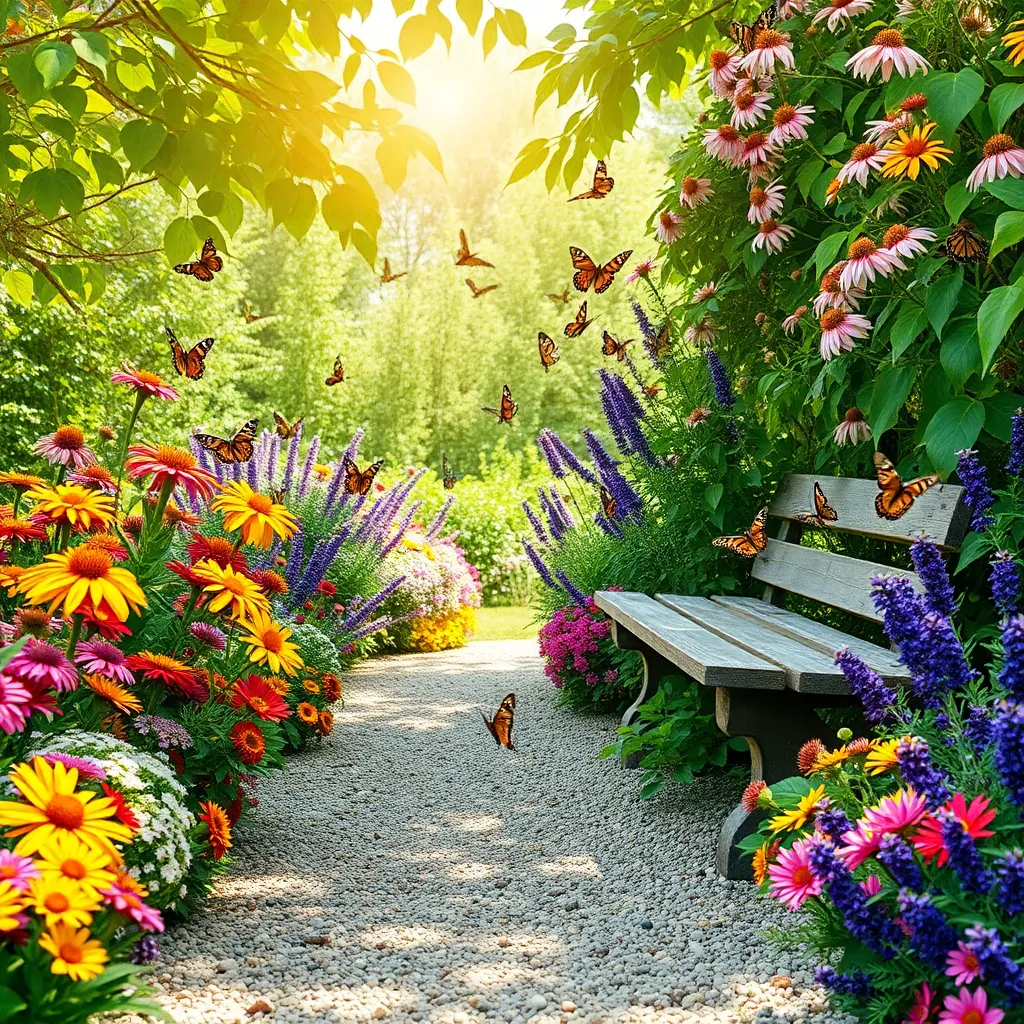
To create a nectar-rich garden that attracts butterflies, focus on planting a variety of flowers that bloom at different times throughout the growing season. Incorporate a mix of annuals, perennials, and shrubs to provide a continuous food source from spring through fall.
Choose plants with a variety of flower shapes and colors to cater to different butterfly species. Flat-topped or clustered flowers like those of zinnias and coneflowers are particularly appealing to butterflies, as they provide easy landing platforms and ample nectar.
When planting, ensure that your soil is well-prepared and rich in organic matter to support healthy plant growth. Loamy soil with good drainage is ideal, as it retains essential moisture while allowing excess water to escape, preventing root rot.
Provide plenty of sunlight, as butterflies and nectar-rich plants both thrive in sunny locations. Position your garden in an area that receives at least six hours of direct sunlight each day to maximize plant blooms and butterfly activity.
For advanced gardeners looking to enhance their nectar-rich garden, consider implementing a watering schedule that mimics natural rainfall patterns. Water deeply but infrequently, allowing the soil to dry out slightly between waterings, which encourages deep root growth.
Incorporate Host Plants for Caterpillars
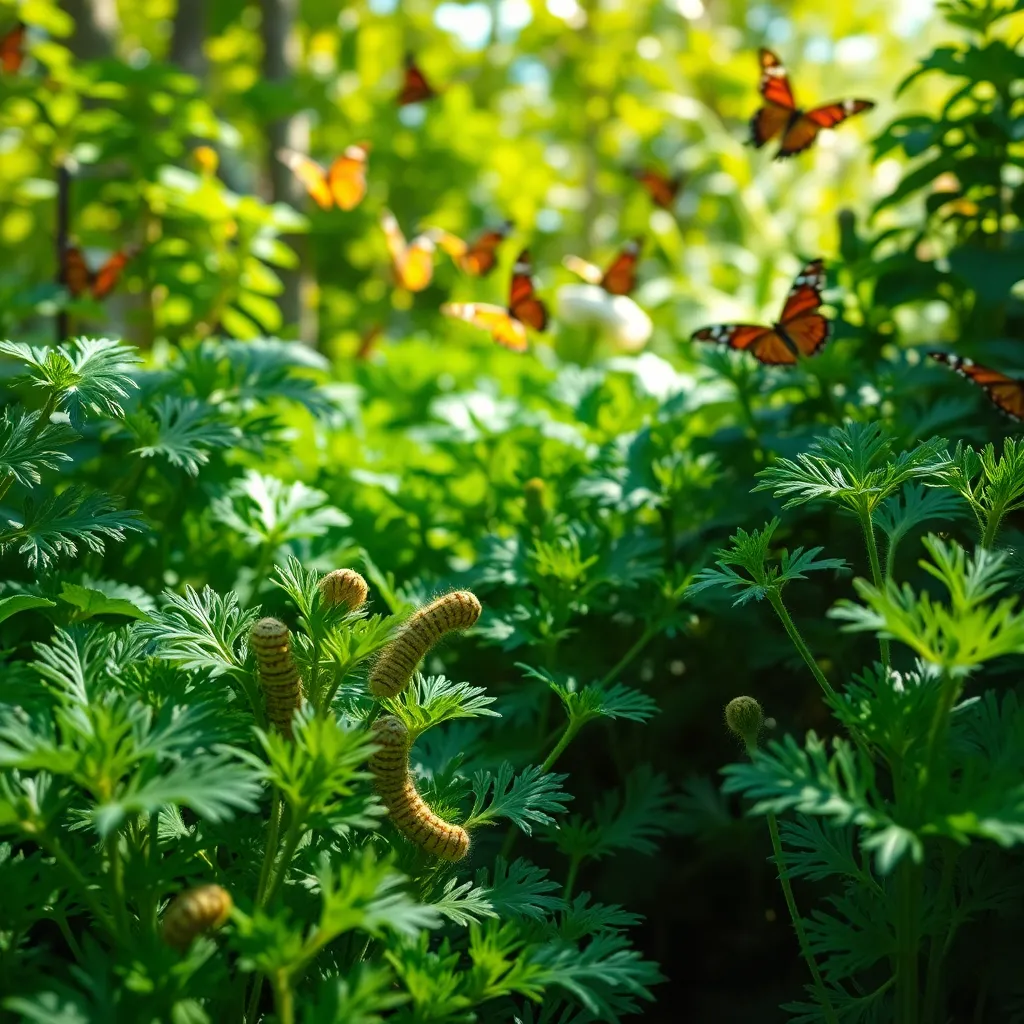
To create a thriving butterfly habitat, it’s essential to incorporate host plants for caterpillars, as these plants provide food for the larvae. Start by selecting native plants, as they are well adapted to your region and offer the best support for local butterfly species.
Consider planting milkweed for monarchs, which is both a nectar source and a host plant. Milkweed prefers full sun and well-drained soil, and it’s important to space the plants about 18 inches apart to allow for mature growth.
Other excellent choices include dill, fennel, and parsley for swallowtail caterpillars. These herbs are easy to grow, thriving in sunny spots with regular watering and rich, loamy soil.
For advanced gardeners, try planting passion vine to attract gulf fritillary butterflies. This vigorous climber requires a sturdy support structure and should be pruned regularly to manage its growth.
Provide Fresh Water Sources
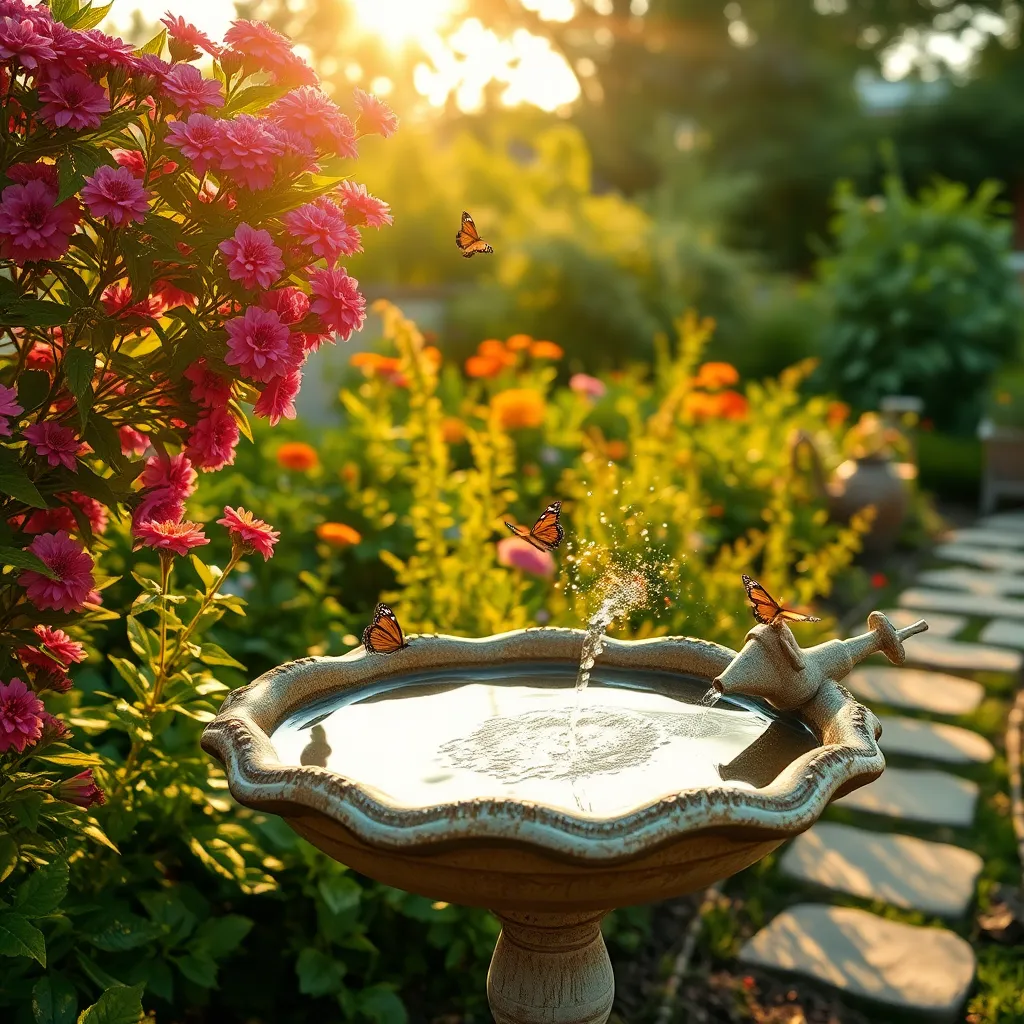
To attract butterflies, it’s crucial to provide fresh water sources in your garden. Butterflies need water for hydration and minerals, which they often acquire through a process called “puddling.”
Consider creating a shallow water dish or birdbath that allows easy access for butterflies. Fill it with fresh water and place some flat stones or gravel to give butterflies a safe landing spot.
Adding a mud puddle is an excellent way to naturally provide both water and necessary minerals. Simply dig a shallow depression in the soil, fill it with water, and let it stay moist to attract butterflies looking for nutrients.
For a more advanced setup, you might incorporate a drip system that slowly releases water into a shallow basin. This keeps the water fresh and reduces the risk of standing water, which can attract mosquitoes.
Ensure Safe Shelter from Predators
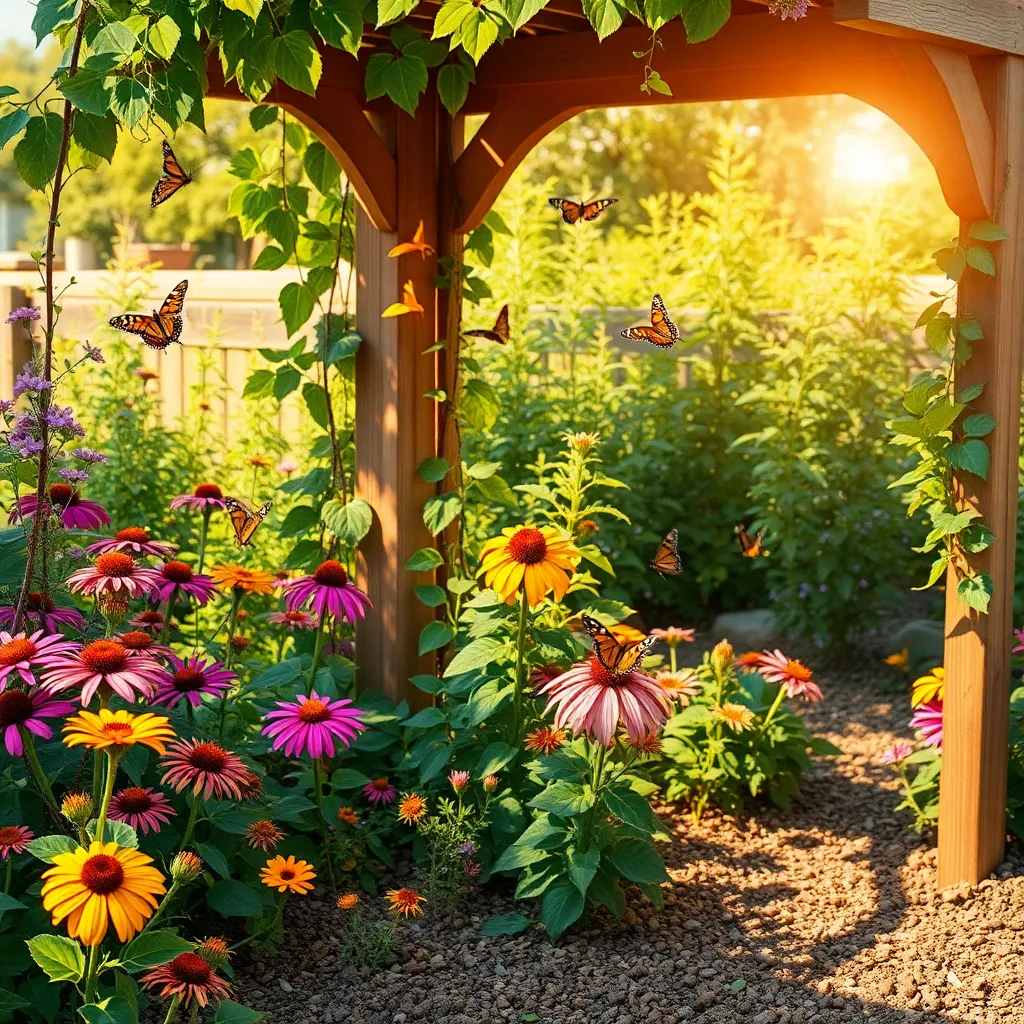
Creating a safe haven for butterflies involves ensuring they are protected from predators. By planting dense shrubs and tall grasses, you can provide natural shelter where butterflies can hide when threatened.
Incorporate plants like milkweed and fennel, which serve as both food sources and hiding spots for butterfly larvae. These plants not only feed caterpillars but also offer essential cover from birds and other predators.
Consider using netting or mesh around vulnerable areas to deter larger predators without obstructing the butterflies’ flight paths. Make sure the mesh has wide enough openings to allow butterflies to move freely while keeping out unwanted visitors.
For more advanced protection, you can create a butterfly house using untreated wood, which offers a safe retreat during adverse weather conditions. Ensure the house has narrow slits that mimic natural crevices, allowing butterflies to enter but keeping predators out.
Conclusion: Growing Success with These Plants
Creating a butterfly habitat is a beautiful metaphor for nurturing relationships, and this article has covered five vital concepts to help you along the way. First, we explored the importance of understanding your partner’s needs, akin to identifying the specific plants that attract butterflies. Next, we discussed the role of communication, much like ensuring the right environmental conditions for butterflies to thrive. Third, we highlighted the significance of giving space and time, paralleling the patience required as plants grow. Fourth, we delved into consistent care and attention, just as a gardener tends to their garden regularly. Lastly, we emphasized celebrating growth and transformation, similar to the joy of witnessing butterflies emerge.
As an actionable step, take a moment today to identify one area in your relationship where you can apply these concepts. Whether it’s listening more intently or offering a gesture of appreciation, small changes can make a big difference.
Bookmark this article to revisit these insights and strategies as your relationship evolves. By doing so, you’ll be equipped to cultivate a thriving, harmonious partnership. Remember, like a flourishing butterfly garden, relationships require ongoing care, but the beauty they bring is immeasurable. Embrace the journey toward relationship success, one step at a time.
